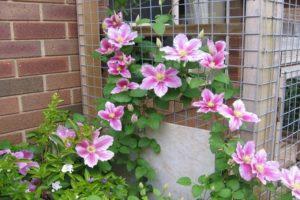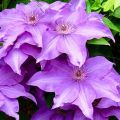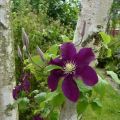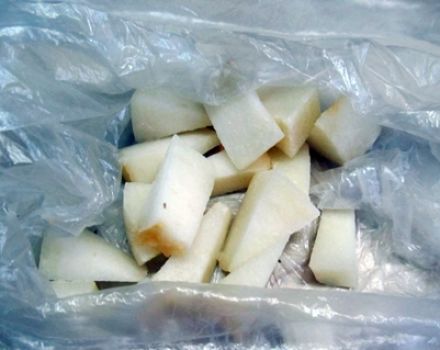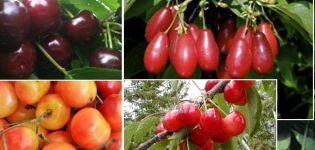Description of clematis varieties Manchurian, cultivation agricultural technology
Beautiful blooming Clematis vines will be a spectacular decoration of a private house, gazebo or fence. The use of one of their types - Clematis of Manchuria for this purpose will turn a vertical surface into a work of art. This species, in addition to its luxurious flowering, is known for its pronounced aroma.
Description and features
This Far Eastern clematis is a perennial plant that belongs to the buttercup family. For the first time, it began to be cultivated in the Russian Far East, Korea and Eastern China.
Its stems are green and flexible; they do not become lignified. The leaves have a complex structure - they consist of 3-7 smaller parts.
If shoots are formed in the current year, flowering occurs in June and July.
Clematis Manchurian is considered one of the most unpretentious varieties.
The flowers are composed of four white oblong petals. In most cases, the length of the vine is 1.5 meters. Sometimes it can go up to 3 meters. The plant has a pleasant fragrant smell. It is enhanced in those Clematis that grow in a well-lit place. Breeder Beskaravaynaya M.A. received on the basis of this species more than 50 hybrid varieties.

Origin
Clematis Manchurian is a wild Far Eastern plant. In Russia, it began to grow at the end of the 19th century. In the USSR, its breeding began in 1950.
Agricultural technology of cultivation
With proper planting, Clematis will delight you with its appearance and luxurious flowers.
Landing
It is recommended to prepare for planting seedlings a year before. Dig up the soil and remove debris and weeds. You need to dig a hole and prepare fertile soil for the plant.
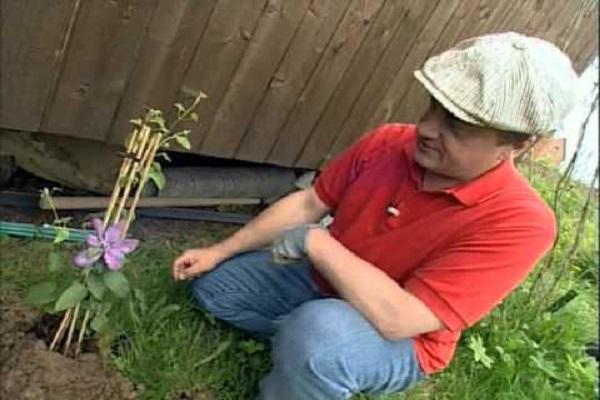
Timing
For planting this seedling of this type of Clematis with a closed root, any time during the season is suitable. If you bought one with open roots, it is best to plant it in the ground immediately after purchase.
Site requirements
Manchu Clematis loves when there is a lot of sun on the site. Planting too close to the wall is not recommended. Since this plant has a developed root system, it may not have enough space, and it will wither.
Care must be taken to ensure that water does not drain onto Clematis in case of rain. Excessive humidity can damage it. You also need to make sure that there is no groundwater close to the surface at the landing site.
If strong gusts of wind can be expected, it can damage the vines due to their fragility.
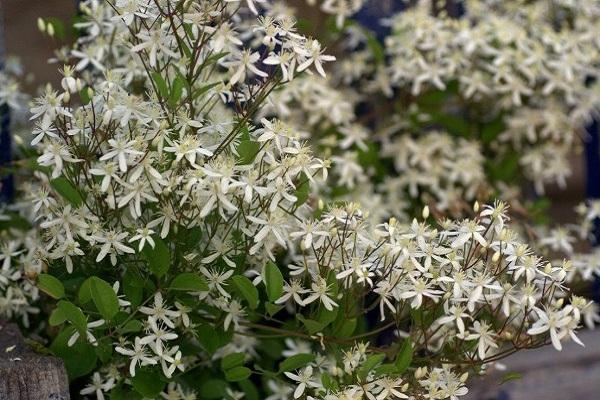
Soil selection and preparation
To ensure good growth, it is desirable to have soil that can be considered fertile. Clematis grows well where it is loamy or sandy loam.
It is important that the soil is light and loose. This is important in order for it to pass air and water well.
You can not plant Clematis on soil that is rich in lime. It is recommended that this place has a slightly alkaline environment.
Selection and preparation of planting material
Before planting, the seedlings are recommended to be placed in water and kept for several hours. An agent that stimulates growth must be added to the liquid.

Landing scheme
For each seedling, it is necessary to dig a hole with a depth, width and length of 60 centimeters. The distance between plants cannot be less than one meter.
A drainage layer is added to the pit at the bottom. It can consist of small broken bricks, expanded clay or crushed stone. Next, you need to pour a fertile mixture, which is prepared from the following materials:
- fertile garden land;
- sand;
- peat;
- humus;
- mineral fertilizers;
- some wood ash.
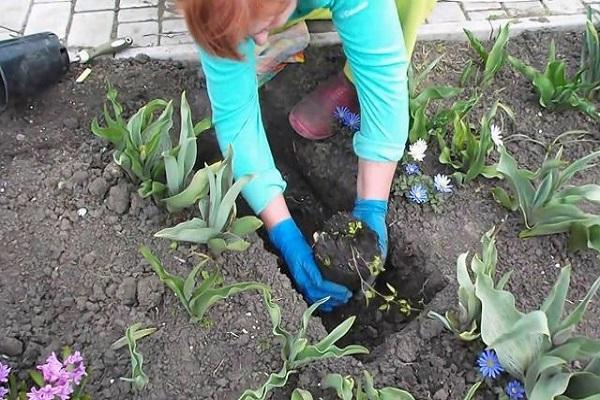
Pour the mixture so that a small mound forms in the middle of the pit. The root is gently spread around it and the seedling is covered with earth.
It is necessary to make abundant watering.
It is necessary that the neck of the root is located 10-15 centimeters underground.
After planting, a circular hole is made around the plant for watering. It is necessary to mulch the trunk circle with peat or sawdust.
The seedling is watered with plenty of water.
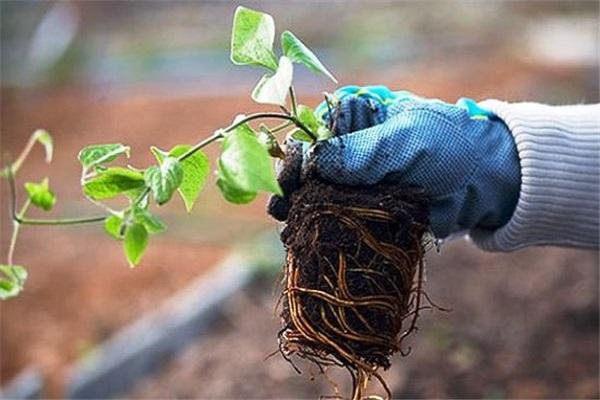
Support
It is necessary to provide a peg to which the plant must be tied. If not done, Clematis will grow, spreading along the surface.
Care rules
After the seedlings have been planted, they need to be provided with quality care. Only under this condition can one expect that Clematis will develop well and bloom.
Watering
This plant reacts negatively to waterlogging of the soil. On the other hand, insufficient watering can impair flower growth. On dry days, watering frequency is two or three times a week. It should be remembered that water should be poured not on the plants, but into the ground next to it. In case of drought, one plant will need to spend 20-40 liters of water.
In normal weather, moderate watering will be sufficient.
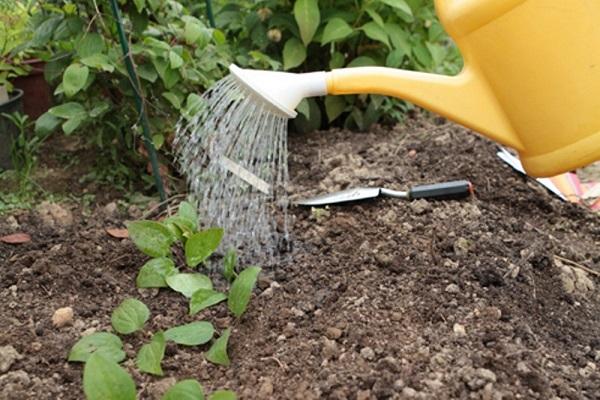
Top dressing
During the first year of its existence, Clematis does not need feeding. Subsequently, it is done three or four times during the season.
For this, organic (mullein) and a full range of mineral fertilizers are alternated. It is not allowed to use fresh manure for feeding.
The schedule looks like this:
- Nitrogen-containing fertilizer is fed during the growing season.
- At the stage when buds are formed, potash dressings are suitable.
- After flowering ends, phosphate fertilizers are applied.
When the pruning is complete, Clematis is fed organic.
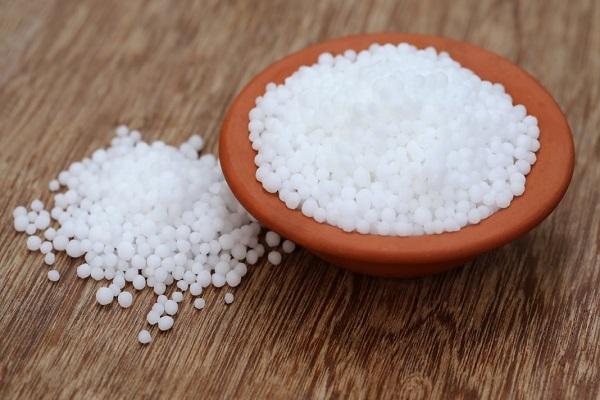
Trimming group
Clematis Manchurian belongs to the third group of pruning.
After flowering is over, the shoots are cut to the first leaf. It is allowed to remove them completely, but this will affect the formation of flowers. The quantity will be smaller, but the flowers will be larger.
Loosening and weeding
Loosening is important after watering so that a hard crust does not form on the surface when drying. Weeding is done as needed when weeds grow.
Protection against diseases and pests
Fungal diseases lead to root wilting. As soon as the disease is detected, it is necessary to spray Clematis with Fundazole, after removing the areas that have been damaged. When the whole plant is damaged, it must be destroyed.
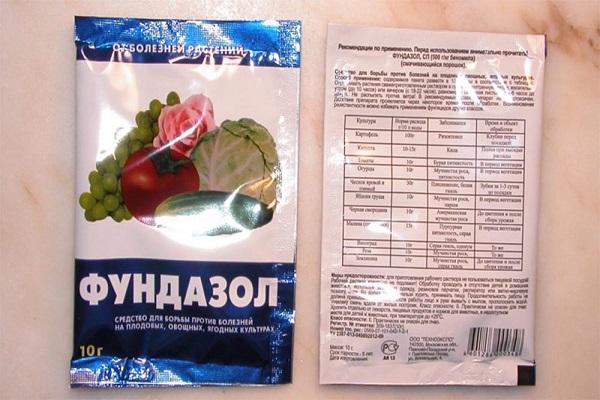
When gray rot appears, it is necessary to remove diseased leaves and treat with Fundazol. To prevent this disease, you can spray twice a year.
When Clematis gets sick with rust, orange bumps develop on the stems. To combat it, Bordeaux mixture is an effective remedy.
Shelter for the winter
This variety is resistant to winter temperatures. However, after pruning, it will not be superfluous to cover the plants with spruce branches or dry leaves. It is necessary to make the ground surface at a slight angle. This will avoid the accumulation of water in the spring near the trunk.
Reproduction
When a plant is propagated, several methods are used. Cutting requires less effort and is safer than dividing the root.
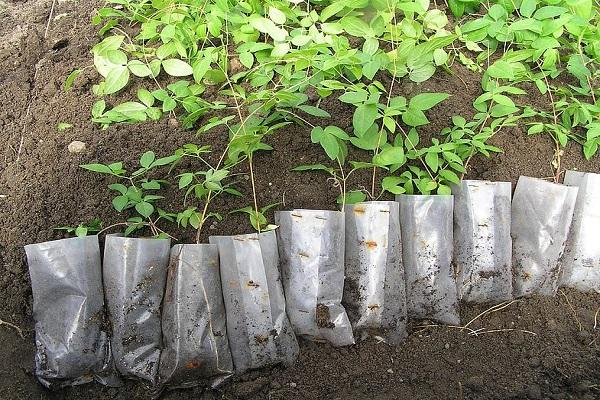
Seeds
This species of Clematis grows well flowers on the shoots of the current year. It is recommended to use seeds for planting, which can be obtained from them. In this case, the germination rate will be higher than from last year's shoots.
In order to improve germination, seeds are left in water for 5-7 days.... Then they are placed in plastic containers or wooden boxes. A soil mixture is used: fertile soil, peat and sand in equal parts.
When planting, the seeds are planted shallowly and sprinkled with a small amount of sand on top. In order for them to germinate, the best temperature will be 25-28 degrees. From above they are covered with glass or film. It is important to regularly moisten the soil. It is recommended to water the sprouts not from above, but using a tray. A little water is poured into it and it is sucked into the soil through the holes in the bottom of the container.
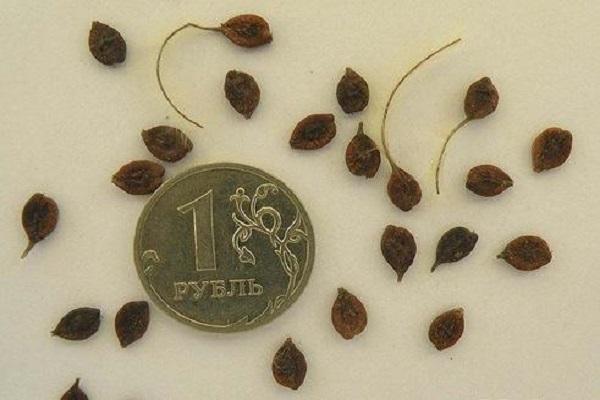
When leaves appear on the sprouts, you can plant Clematis in a permanent place. Seedlings are placed at a distance of at least 20 centimeters between them. They are grown for several years and, after flowering, after 2-3 years are transplanted to a permanent place.
Layers
Grooves are made next to the bush, to which the branches are bent. These shoots must be strong and healthy. They need to be covered with earth so that only the tip of the branch remains outside. Rooting will take place within a year. After that, you need to disconnect the layering and plant it separately.
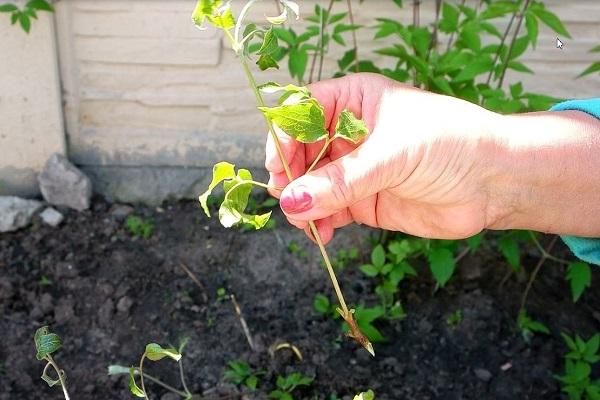
Dividing the bush
For using this method of reproduction, plants that are 5-6 years old are suitable. Their roots are dug out of the ground and divided into two parts. It is necessary that each of them has intact roots and buds. After separation, both roots are planted in a permanent place.
Use in landscape design
This plant will look spectacular when decorating trellises or arbors. If you install a vertical lattice next to the wall of the house and plant Clematis of Manchuria next to it, then he will beautifully wrap it up and create a unique spectacle.
If this plant is grown without the use of a vertical support, it forms a luxurious carpet of flowers.

